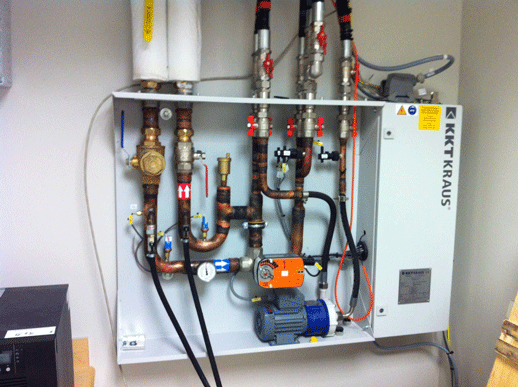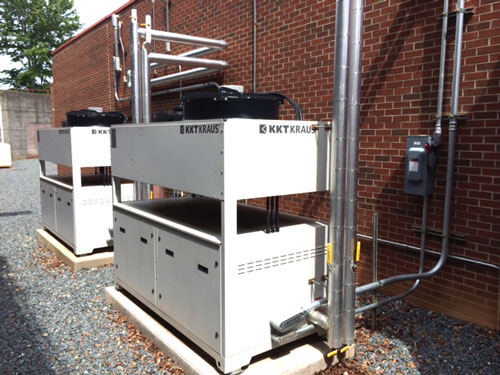|
All modern scanners use some sort of fluidic cooling to minimize heating. This is generally accomplished by circulating de-ionized water or an ethylene glycol solution from a heat exchange pump ("chiller") located in the adjacent magnet equipment room. The water flows through tubes, jackets, or channels in close relation to the gradient coils as shown in the illustration above. Some scanners also include forced air cooling around the gradients.
|
In addition to heating of the gradients themselves, warmth also comes from eddy current heating of the radiofrequency (RF)-shield. The RF-shield lies between the gradient and RF-coils and serves to decouple the two during RF transmission. The RF-shield is closely apposed to the thin RF-coil and is thus located very near the inner plastic wall of the scanner bore. Care must be taken to keep large patients from touching the inner walls of the scanner as rarely burns have occurred when the patient's body becomes part of an eddy current loop.
Advanced Discussion (show/hide)»
With wider bores and stronger gradients (80 mT/m with slew rates of 200T/m/s), thermal capabilities have been pushed to the limits. Cooling systems must be able to remove at least 40 kW of heat from the gradients, meaning chiller flow rates may exceed 30 L/min at over 100 psi. One innovative strategy adopted by GE in its SuperG gradients is to utilize hollow conductors allowing water to flow both in and around the windings.
Gradient Amplifiers
The standard gradient drivers for modern MR scanners are known as Pulse-Width Modulated (PWM) amplifiers. These amplifiers always operate at maximum voltage, with output modulated by a binary (off-on) switching pattern at frequencies ranging from tens to thousands of Hz. These amplifiers can produce very high output currents with only modest heat dissipation because their voltages are not ramped up and down.
Doty FD. MRI gradient coil optimization. In: Blumler P, Blumich B, Botto R, Fukushima E (eds), Spatially Resolved Magnetic Resonance. Wiley; 1998, pp 647-674.
Hidalgo-Tabon SS. Theory of gradient coil design methods for magnetic resonance imaging. Concepts Mag Res Part A 2001; 36A:223-242.




